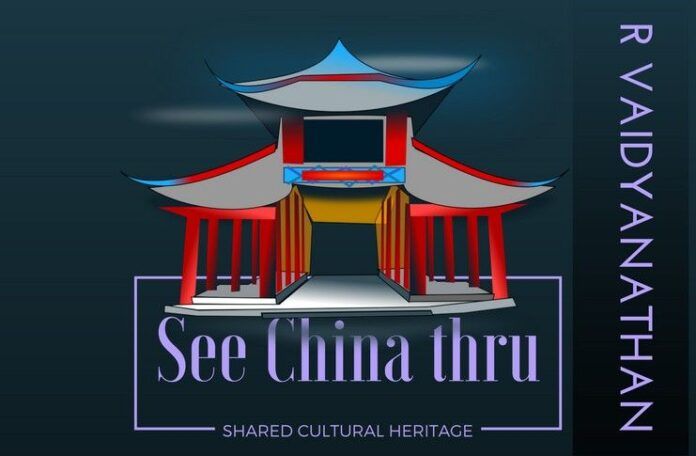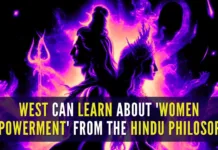
July 2014 was an important month for global economics and China. It was the first time in recent history that China has overtaken USA in Gross Domestic Product (GDP) [adjusted for purchasing power parity or PPP] and has become number one country in the world according to Euromonitor. Now the order is China/ USA/ India/ Japan in terms of GDP at PPP. Of course, in per capita terms, USA has ten times more gross income than China given the population size of the latter.
Unfortunately for India—we look at India also using White man’s lens since we are genetically wired to them.
Still, China’s growth has been phenomenal and in the next two decades, it is poised to become numero uno even in nominal terms out running the USA. This has implications for India from an Asian perspective and also we need to formulate our strategy for China. Traditionally in the last few decades, we have been looking at China using US or UK lens. This is due to the fact that we have not developed many China centers all over India. Hence we have few experts who understand their language and try to look at China with Indian glasses rather than the Anglo-Saxon lens.
Unfortunately for India—we look at India also using White man’s lens since we are genetically wired to them. Our children study in the west and our experts are all trained in the west.
If the US says yoga is good for health we will start to practice it. West will decide if China is good or bad and we will follow them!
For the last 000s of years, we never had any war with China — a rare occurrence in the world particularly for the Abrahamic world which thrived on wars and genocide. 1962 was an aberration due to Nehru. In the words of Hu Shih, former Ambassador of China to the USA [1938-1942] “India conquered and dominated China culturally for 20 centuries without having to send a single soldier across her borders.” Ship loads of Sanskrit and Pali original works taken away by Chiang-Kai-Shek from the mainland to Taiwan bear testimony to it. These are exhibited in the Taipei museum even today.
The major change that is taking place in China is not related to their growth rates and Three Gorges Dam and the shopping malls and Olympics stadia. That is a typical Western way of viewing China. The main change is in religious affiliation and assertion of Islamic followers and development of large scale underground Church. The middle classes have given up rice [perceived to be for the illiterate poor] and are embracing Christianity since it also helps in job mobility particularly in global companies where the heads could belong to the same Church. Many Chinese students in the US call themselves Christian names like George or Vincent even if they have not converted. The Muslim population is less dispersed and more concentrated in specific locations like western part.
The ten handed Buddha in the Summer Palace of Ching dynasty near Beijing has a significant relationship with our idea of Lord Vishnu who destroys evil and even this is mentioned clearly.
But there is also a growing interest in China about its past. The Ming dynasty tombs in Beijing which are made in marble were painted in red color during the great cultural revolution of the sixties and even today laborers are washing it to make it back into white color without success. The guides are not reluctant to talk about it. The ten handed Buddha in the Summer Palace of Ching dynasty near Beijing has a significant relationship with our idea of Lord Vishnu who destroys evil and even this is mentioned clearly. More importantly, China is opening what are called Confucius Institutes in more than fifty countries which are similar to British Council efforts but more focused on China’s ancient wisdom.
The first thing we should learn is to stop looking at China with Western glasses
The economic boom in China has given rise to issues related to their faith/religion and associated things. First and foremost, China is facing a severe separatist [called splitters by Chinese] in their western region namely Xinjiang by Uighurs. The region is populated by followers of Islam religion and seeing unrest for the past two decades. But recently it has reached violent proportions. For instance, last year Chinese claimed that at least 100 have been killed in disturbances in that region. Not only that, some portion of the Uighurs has carried the battle to Beijing itself. In other words, one form of regional separation combined with Islamic terrorism has become a major problem in China. There are also reports that the Islamists are taking shelter in the Pakistan occupied Kashmir (PoK).
On the other hand, China is also waging a battle with “unrecognized” Church in its territory. Once a hub of Christianity, worshippers in Wenzhou fear their faith is facing its biggest threat since the Cultural Revolution. The recent visit of the Pope to South Korea as part of his engaging Asia has fueled concerns in China since China has its own church and does not recognize Papal authority.
“By my calculations, China is destined to become the largest Christian country in the world very soon,” said Fenggang Yang, a professor of sociology at Purdue University and author of Religion in China: Survival and Revival under Communist Rule. But for China, both the Abrahamic religions are alien to its culture going back several thousand years. So they are trying to revive “Confucianism” by encouraging the study of it as well as opening several centers to propagate it. Buddhism is their ancient religion and Hindu influences are significant.
The keynote speech by the General Secretary of the Communist Party of China- Hu Jintao to the 17th Party Congress in October 2007 – devoted a paragraph to religion. He stressed that religious people including priests, monks and lay–believers played a positive role in the social and economic development of China. Hence religion is not anymore the opiate of the masses. The state controlled Xinhua stresses that there must be freedom of belief. It says that religion can play an important role in realizing a ‘harmonious society” which is the new political role of the party. That is the main issue we at India should be interested in. A 2007 study conducted by two professors of China Normal University based on more than 4500 people concluded that more than 300 million people namely 31 percent are religious and more than 60% of those are in the 16-40 age group. The number of followers of Christianity has increased to 12% from a low of less than 8% in the nineties.
But this is an opportunity for us since it is better to have a competitor and neighbor sharing the past cultural commonness.
This last fact is interesting since a huge underground Church has developed in China and Zhao Xiao, a former Communist Party official and convert to Christianity, thinks there are up to 130 million Christians in China. This figure is much more than the official figures of 21 million –16 million Protestants and five million Catholics. If the latter figure is true—which is corroborated by other like Pew Forum –then there are more Christians in China than the Communist Party membership which is pegged at 74 million in the last count.
Hence, India should be sending Sri Sri Ravishankar/Mata Amirtanandamayi / Swami Ramdev/ Pramukh Swami/ Sankaracharyas/ Vaishnavite Seers and other spiritual leaders, Bharata Natyam experts, musicians, other artists in hundreds to China to “Conquer and Dominate” by our soft power. We need to print millions of copies of Ramayana and Mahabharata and our Puranas and Gita and Jataka stories in all modern Chinese languages and widely make them available. The CDs of Mahabharata and Ramayana etc. can also be given free. We should start some fifty Bharatiya Vidya Bhavans in China. Actually, China needs this more than the USA even though all our soft power is currently on show in the USA. We should create a fund of at least Rs.10,000 crore for this effort. There is a statue of Kalidasa in the Shanghai theater unveiled by the theater academy. I do not think of any metro in India including the so called “cultural capital” Kolkata, having a statue of Kalidasa. At Kolkata, the Theatre Street became Shakespeare Sarani and not Kalidasa Marg!
We should strategically recognize the weak point of China and also the need of its masses in the absence of Communism. Many a Chinese even today believe that their next birth should be in India to reach salvation. Culture and religion are not taboos anymore.
We tend to look at China either through the Western spectacles or through local Marxist spectacles—which have more thick glasses.
There are other issues. Officially China recognizes or permits only five religions namely Buddhism, Islam, Taoism, Protestantism, and Catholicism. Hence we should take steps to include Hinduism as one of the permitted religions. The Indian Government should take appropriate steps in this regard. The point is that our soft power in culture is interwoven in a tapestry form with the religion. You cannot separate it howsoever one tries it. Carnatic Music without Bhakti is neither music nor art. But our Government of all hues has never raised this issue with the Chinese.
The strategy should be to envelop China with Music, Dance, Art, Yoga, Ayurveda, spiritual texts like Ithihasas, Gita, Puranas etc and capture the hearts of the middle classes as we have done for centuries.
The second issue is related to our own mindset. We tend to look at China either through the Western spectacles or through local Marxist spectacles—which have more thick glasses. We need to come out of it. Even when invitations come to Indian spiritual leaders, the Government of India remains unenthusiastic and indicates its disinterest in the false assumptions regarding China’s political orientation. The policy formulators are still living in the sixties and seventies while China is undergoing a gigantic social crisis due to material prosperity and spiritual vacuum. Unfortunately, as a Chinese colleague of mine at Shanghai University commented last year, “both our countries are ruled by rootless deracinated foreign educated wonders that do not have any idea of the civilizational roots or the cultural richness of our lands.” Hopefully, now it should have changed!!
China is enthusiastically waiting. To quote late B K S Iyengar, the doyen of yoga, “Mr. Iyengar told The Hindu during a visit to Beijing that he saw China as a future home for yoga. When he traveled to Guangzhou to give a lecture, he was stunned to find that organizers had rented out a stadium – more than 1,300 students had come to listen to him”.
But this is an opportunity for us since it is better to have a competitor and neighbor sharing the past cultural commonness. This will be very useful when the world is going to have two super powers from Asia unlike the conflict of last century between two super powers—USA and USSR- who did not have any shared cultural roots.
It is interesting that by now many Indians are aware that MSM of US/ UK peddles lots of lies about India. But when the same rags say something about China we swallow it hook line and sinker.
We must distinguish between Government and society — the same way Church does in India
Chinese society is yearning to have a good relationship with us. Let us remember that Buddhism is a rebel Child of Hinduism — All rebel children are embraced as they grow old and are absorbed into the mainstream.
China is at the threshold of change. It is yearning for spiritual solace. Many groups and sects from Western countries [with or without permission] are trying to spread their influence and message—since this is an opportunity for them.
Are we ready to undertake such a mission? Or continue to mouth worn out clichés dished out by NYT and WSJ and Western Governments?
- नकली खबर लक्षण है, बीमारी नहीं! - April 16, 2018
- Fake News/ Accreditation and Sedition - April 4, 2018
- Two Poisonous Seeds - March 15, 2018











This can be one part of the strategy, but for sure we cannot trust China blindly even if they take a liking to our art and culture. We trusted them once and we paid heavily for that in 1962. This can be a part of our strategy alongside fully developing our military capabilities to handle China just in case the need arises . Also the Chinese interference in fuelling insurgency in the North East is another reason for us to be wary of them. Even the Pakistanis love our food and music but ultimately stab us at the slightest opportunity. China Pak nexus does not wish to see India grow and this reality cannot be ignored when considering our China policy.
Good insight .. worth trying and we have nothing to lose but everything to gain from this !!
Superb article sir! India should not jump onto western bandwagon but pursue it’s national interests in thr long term
Interesting perspective. Can’t hurt, if the Govt has an open mind and wants to try it.